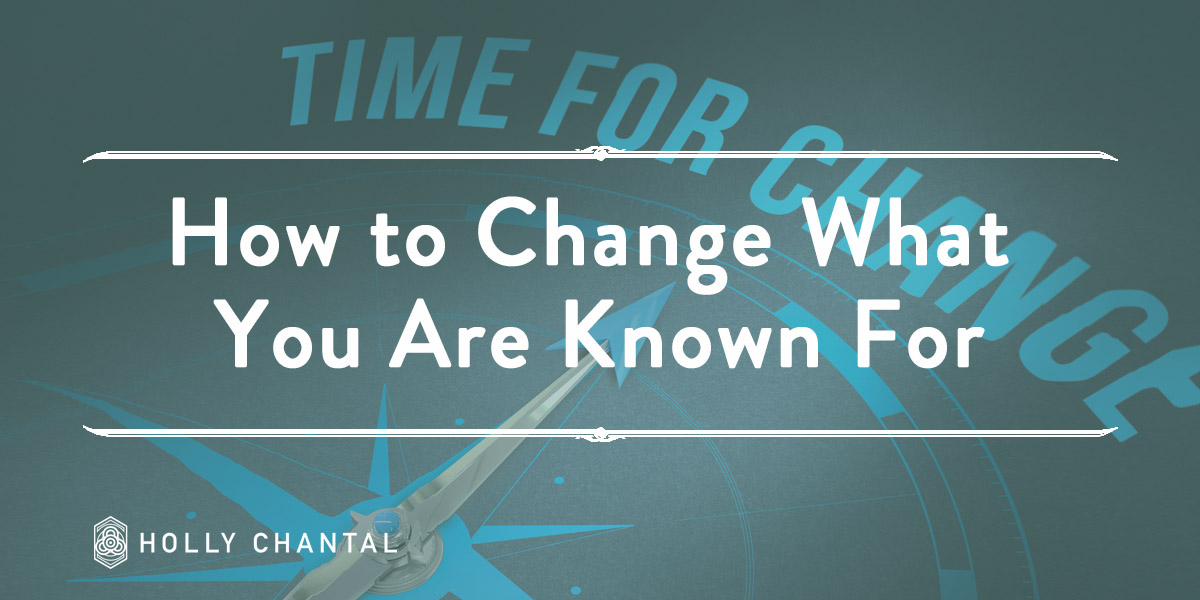You’ve been in business for a while.
You’ve become known for what you do.
But what if you want to do more than that one thing, or if you want to do something entirely different?
This is where I found myself a few years ago when I decided I didn’t want to build websites anymore.
At the time I was 7 years into my business, I had high profile clients who after having a great experience with me were sending me their clients.
It was a great gig, and website production was 70% of my revenue.
I also wasn’t enjoying it. Not only was I not enjoying the work, but it was so time consuming that there was nothing left for what I really wanted to do. As a result I was unhappy and burning out (while also raising toddlers).
So it was time to change what I was known for… without alienating my audience or referral partners, and without losing revenue.
While this probably sounds much easier said than done, it honestly was totally within reach and the hardest part was dealing with the fear of transition.
Here is what I did and also the same steps I’ve guided clients through when making similar transitions:
1. Change the conversation
How did you become known for what you do? You talked about your services, your philosophy behind why you do things the way you do, you told stories about your clients and their successes, and so on. You can do all of these things and work in your new direction.
For most coaches and self-employed practitioners their “shift” isn’t a complete 180 turn into a completely different direction but something much more subtle.
For me I wanted to shift from being known for website design to being known for branding and messaging. This meant making a subtle shift in my marketing and talking about the strategy behind your website and what you need to know before you dive into a website project versus talking about the website strategy itself.
My audience was obviously still interested in web-marketing so even though I changed the conversation they were still on-board.
To use an example from another industry, let’s say you are a therapist that wants to bring in more metaphysical modalities into your practice. You would begin to introduce those modalities and tell stories about what they can do for your clients.
Changing the conversation really only takes a decision and a bit of planning, once you take the leap most of my clients are surprised at how accepting their audience is of the new message and have even more respect for their work.
2. Raise the barrier
This step isn’t for everyone but when you’re making a shift in services but aren’t ready to eliminate the work you’re known for, if you begin to raise the price of that service it will do two things for your business.
- 1. You’ll automatically get less people buying the service, but at a higher price point which frees up time and doesn’t impact your revenue as drastically.
- 2. You’ll open up space for your new services at the price point your clients are used to.
For me this meant unbundling my brand messaging services into their own package. Then I raised the prices of website design because now that service included branding + design which made it even more desirable, and at a price that made it worth the extra work.
What’s interesting here is that my services didn’t actually change, I had always done branding as a prelude to the website design. But now that I was talking about it differently, the perceived value of the work changed.
3. Eliminate old offers when your new ones get traction
This is important, in many cases if you eliminate the offers you’re known for right away you’re going to immediately lose revenue, but when you allow your new offers to get traction you’ll find that they will naturally begin to replace your old offers. When people are coming to you just for your new offers, you know that it’s time to let go of the old.
Even though I decided in 2016 that I was “done with websites” I didn’t discontinue them until 2017. By then I was only getting a few website projects here and there and more people were coming to me solely for brand messaging. I found partners to support my clients over the long term so I could step away with a clear conscience.
4. Rebrand
This actually isn’t the last step but I know some of you will be wondering at what point do you “rebrand” and the answer is that you’ve been rebranding all along.
Rebranding is changing what you’re known for.
In my example I was changing what I was known for over an 18 month period, and redid my website once my old services had been completely eliminated to bring closure to what was and step fully into the new direction.
Sometimes that is how it works and other times it makes sense to do the “rebrand” of your website and visual materials much sooner. When I rebranded a second time between 2018-2019 I started with the website and let that lead the change in conversation. In this case the new message just couldn’t live under the old visual identity.
The most important step in all of this is to change the conversation, you’ll become known for whatever you’re sharing as long as you’re consistent and visible. So decide what that new direction is and what you want to say with your new message, who you want to attract, and begin sharing that now.
I’m sure you’ll be pleasantly surprised at how your audience responds… and if they don’t then you know you have more work to do on your message and you’ll be thankful you didn’t abandon what was working for you in the meantime.





One Response
This is absolutely excellent! I have noticed I am always evolving in what I do and my messaging because I am always growing….but HOW to continue to shift and streamline my message more and more has been the challenge – this is excellent information! Thanks Holly!